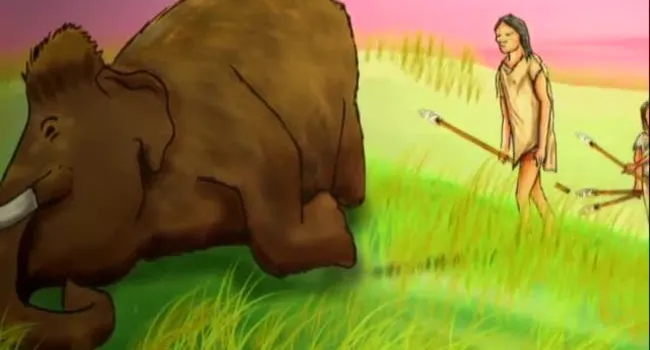From the remains of stone tool manufacturing at Topper, scientists can piece together the marvelous technology that enabled Clovis hunters to kill huge animals. The tools were made from very It's a very high-quality raw material. The stone tools were made them by striking them with a hammerstone.
Clovis technology is largely a bifacial technology. That's one of the defining features. It is one of the earliest widespread bifacial tool traditions in the New World. Bifacial means the tools are chipped or flaked on both surfaces to create a thin, flat, sharp object. You would take a bifacial preform, and from that, you would create a Clovis point. One of the defining features of a Clovis point is the flake removed from one or both sides, in the most stringent definition of this tool, to create a good, broad, flat hafting surface.
The Clovis point would be placed onto a handle. Instead of being tied directly onto a large spear shaft, a lot of these would be put on short, tapered foreshafts so they could be removed. These would be inserted into a larger shaft where they could have been thrown with a spear-thrower or used as thrusting spears. A lot of people during the Paleolithic times, during the last 20,000 or 30,000 years, adapted some version of the foreshafted spear to use for hunting large mammals.
When Clovis points are found archeologists also find long, parallel-sided flint blades. The blade provides a long, very sharp, much more conventionally knifelike edge.
Between blades and bifaces, archeologists have a complete tool kit that would have been used by a Paleo-Indian trying to make a living in South Carolina 12,000 or more years ago.


